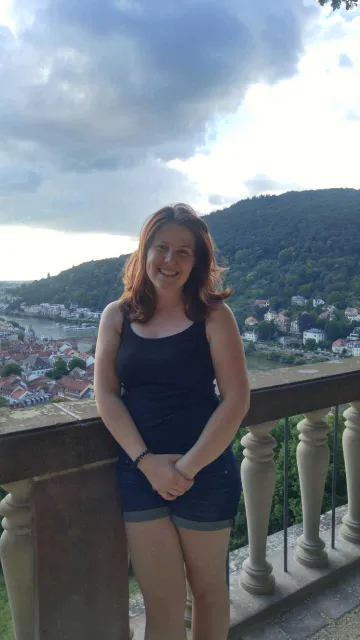
I am a rising fourth-year student in LabMonti where we study the electronic properties of solids at the interface. Because LabMonti has a significant amount of collaborations in Europe, I spent the first half of my summer studying abroad in Kaiserslautern, Germany. This trip was made possible by the NSF International Collaboration Supplement grant.
I worked in the Aeschlimann group using sophisticated instrumentation to observe the lifetimes of electrons on different systems. The overall goal of the project was to understand a mechanism by which the electrons decay by using a pump-probe laser experiment. Because of the ultrafast laser, we are able to observe the lifetimes in the femtosecond regime.
By developing an understanding as to how electrons are moving through an interface, it is possible to design devices which can be tailored based on their electronic properties. We are elucidating the fundamental processes that occur at an interface using state-of-the-art instrumentation.
As well as studying the dynamics of electrons, I travelled to different parts of Germany and Europe during my weekends. I explored Kaiserslautern, Berlin, Heidelberg, and London. For my first adventure in Europe, I took the Deutschbahn to Berlin to visit a childhood friend. We ventured to the Brandenburger Tor, Tiergarten, Checkpoint Charlie, and Berliner Dom as well as watching the Karneval der Kultern (Carnival of Cultures). Berlin was a beautiful city with a magnificent diversity of cultures and delicious foods such as Curry Wurst.
The next weekend I explored Kaiserslautern and hiked to some castle ruins called Hohenecken. The castle was constructed in the 12th century and was last occupied in 1689 when it was destroyed by the French.
The following weekend, I took the Deutschbahn to Heidelberg which was about an hour east of Kaiserslautern. Heidelberg is situated along the Neckar river in south-western Germany and is home to several notable universities, i.e. Max Planck Institutes and Heidelberg University. While there, I hiked first to the Heidelberger Schloss (Heidelberg Castle) and then to the top of Heiligenberg (Saints’ Mountain). The Heidelberg Castle was built in 1398 and sits above the city of Heidelberg and the Neckar Valley. In the 1600s, the castle was attacked by the French. To commemorate this event, the first weekend of every summer there is a huge fireworks display called Heidelberger Schlossbeleuchtung, or lighting of the castle, which was spectacular to see. The following day I hiked to the top of the Saints’ Mountain to visit the monastery which was built in the 900s. The mountain had been occupied by humans as far back as 400 BC by Celtics. This hike brought me through the main streets of Heidelberg, to Philosphers’ walk, and finally to the top of Saints’ Mountain which was home to both the monastery as well as an amphitheater called Thingstӓtte which was constructed by the Nazi Party in 1934. As well as history, I got my first taste of traditional German food!
My final adventure brought me the city of London. The first day there it was very beautiful and sunny! I explored Hyde Park and walked through the Wellington Arch to Buckingham Palace. The following day I went to one of London’s outdoor markets, Borough Market and the Tate Modern Art Museum. I walked along the River Thames to the Tower of London and crossed the Tower Bridge.
As travelling and science are both something that I am passionate about, this trip was spectacular and fulfilling. I had the opportunity to perform state-of-the-art science as well as to explore Germany and London, and hopefully I will be returning next summer!






